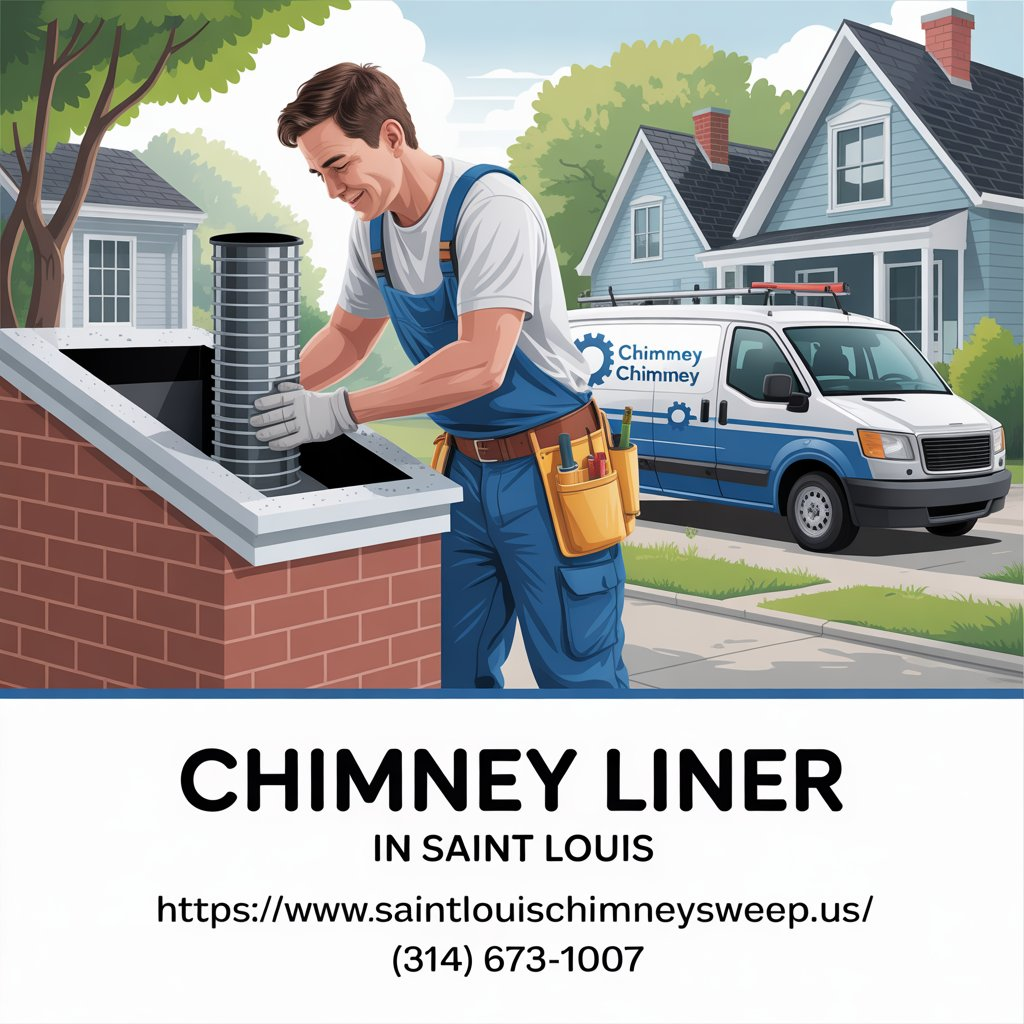Chimneys are an integral part of the majority of houses in Saint Louis, especially when it gets cold in winter. However, most homeowners give little thought to one of the most crucial components of safe and efficient chimney function: the liner. Skipping repair on this item may not be a concern to you, but it has horrific consequences for your property, safety, and maintenance cost in the long term. It all ultimately depends on the condition of your Chimney Liner.
Why It Matters
The chimney liner has a straightforward function by keeping combustion products in place and safeguarding the walls of the chimney against corrosion and heat. Whatever it is made of, metal, clay, or ceramic, its function is to guide smoke and gases safely away from your house. Without a functional liner, deadly gases release such as carbon monoxide can seep into living areas, and heat destruction can incinerate nearby walls or insulation. A malfunctioning liner means that your chimney is no longer performing the vital task of protecting both the structure of the house and its occupants.
Common Problems Resulting from Postponing Repairs
Failing to repair your chimney liner when necessary can lead to many problems:
Creosote Accumulation: A damaged liner serves as a conduit for moisture to mix with creosote and increase the dangers of chimney fires.
Masonry Damage: Leaks through a cracked liner can weaken brickwork, mortar joints, and structural integrity.
Smoke Leaks: Without containment, smoke can fail to vent normally, producing backdrafts and indoor air quality issues.
Fire Dangers: A defective liner can expose wood framing and insulation to intense heat, which in turn compromises structural fire.
Lower Efficiency: Inefficient smoke and gas removal makes your heating equipment work harder, which increases energy consumption and bills.
Important Aspects of an Effective Chimney Liner
An effective chimney liner will possess the following characteristics:
Heat Resistance: Resist intense heat without warping or cracking.
Gas-Tight Seal: Prevents hazardous gas from entering the house.
Corrosion Resistance: Especially important for metal liners in locations with acidic exhaust from equipment burning gases.
Proper Sizing: Ideal diameter for maximum draft for different fuel types and appliance location.
Fixing Chimney Liner Issues
Schedule Professional Inspection: Trained chimney sweeps will employ cameras and diagnostic equipment to probe liner integrity.
Get a Condition Report: OBTAIN COMPREHENSIVE REPORT OF ANY CRACKS, CORROSION, OR FUNCTIONAL ISSUES.
Choose the Repair Option: The choice is to reline with stainless steel, replace the clay flue tile, or use heat-resistant cast-in-place liners.
Plan the Repair: Preferably before winter season to prevent losses and holiday price increases.
Testing After Repair: Professionals should carry out a draft and pressure test to ensure successful repair.
Do Not Ignore Chimney Liner Inspection
The fifth sentence deals with the importance of inspecting chimney liners. Regular inspection ensures that damage is detected in its initial stages before a considerable amount of deterioration is experienced. Experts recommend regular checkup of your chimney even if you have not used it frequently. You can’t visually identify small cracks or rust with the naked eye, yet they cause fatal dangers. Delaying the issue often results in runaway problems that would not have occurred if you had acted promptly.
Safety Factors
The consequences of the neglect of chimney liner deterioration regarding safety are staggering. Structural fires and carbon monoxide leaks, in addition to being the most obvious dangers, are not the only dangers with sloppy maintenance involved. Mold will form when water enters cracks and gets lodged in the chimney. Occupants, especially children and the elderly, will suffer from respiratory issues. In some cases, fire damage due to negligence is not covered by homeowner insurance. On gas unit houses, a deteriorating liner can even cause incomplete combustion, pumping nitrogen dioxide and other harmful gases into living spaces.
“A good working chimney liner isn’t a luxury—it’s an option for home heating safety,” notes Mark R. Collins, Certified Chimney Professional and owner of Midwest Fireplace Services.
Cost Breakdown (With Disclaimer)
Replacing or repairing a Saint Louis chimney liner inspection varies based on damage extent, liner type, chimney size, and labor. A quoted cost is included below:
| Repair Type | Estimated Cost (USD) |
| Clay Tile Repair | $750 – $1,500 |
| Stainless Steel Relining | $2,000 – $4,500 |
| Cast-in-Place Liner | $2,500 – $5,000 |
| Full Liner Replacement | $3,000 – $7,000+ |
| Camera Inspection | $100 – $300 |
Disclaimer: Estimates are based on contractor rates, material availability, and chimney accessibility. Always insist on a written estimate after inspection.
Frequently Asked Questions (FAQs)
Q: How often do I need to inspect my chimney liner?
A: Recommended annually, prior to the beginning of the heating season.
Q: Can I use my fireplace if the liner is cracked?
A: No. A defective liner poses a safety and efficiency hazard. Use must be discontinued until repair.
Q: How do I determine if the liner is defective?
A: Signs are smoke in the house, unusual odors, visible crack, or crumbling debris in the firebox.
Q: Is clay superior to stainless steel?
A: Stainless steel liners are more resistant to corrosion and last longer, so they are an excellent retrofit choice.
Q: Will it be covered by insurance to fix the chimney liner?
A: It will depend on your policy. Some policies will cover accidental damage but not wear-and-tear or neglect.
Conclusion
Waiting for a fixed damaged chimney liner in Saint Louis is not a minor maintenance issue—it’s a serious risk to your safety, integrity of your home, and wallet. From creosote buildup to leaks, the consequences of ignoring a damaged liner can be catastrophic and costly. Early identification through chimney liner inspection and timely repair are the cornerstones of safe, efficient performance and prolonging your chimney system’s lifespan. Save your home, your health, and your sanity now.
Read More: Chimney Sweep
